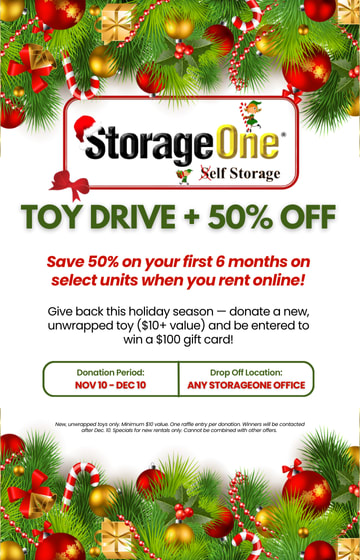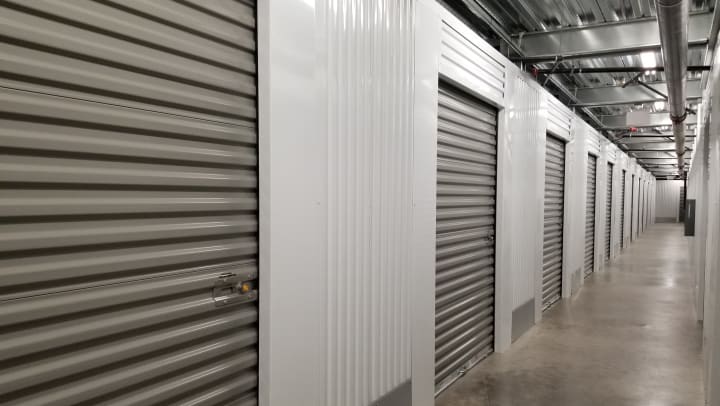When it comes to a storage unit, it can sometimes feel easy to dump all of your excess possessions in there and forget about it. After all, that’s what storage units are there for, as a way to declutter a home and stash momentos from the past away in an offsite, convenient location. Some people even store important stuff that belongs to other family members (parents, kids, etc.). But what happens when innocent clutter gives way, and hoarding tendencies take over? What if your storage unit is looking less like an overflowing attic and more like an antique store that hasn’t been shopped in years?
For some people, the amount of clutter that accumulates is the biggest barrier that gets in the way of cleaning up; the first step of cleaning can feel so daunting that it paralyzes people from actually making a change. So we’ve taken the first step for you: we’ve put together a checklist to de-clutter a storage unit.
Step 1: Make a checklist and create a pathway
What are your goals for your storage unit? Do you want to repurpose it for new stuff? Do you want to empty it out and use that money elsewhere? Whatever the case, a good first step is to create a plan with actionable goals that you can work towards. Once you’ve created a plan and a timeline, it’s time to open that garage door and assess the situation.
Experts recommend first creating a pathway through to the back of the unit. A hoarder’s storage unit is typically so full that it feels impossible to maneuver in, so creating a pathway allows you or professionals who are helping to fully assess the scale of the project. By creating a path you can also identify different categories of clutter so you’ll know where to sort your stuff going forward. With a pathway, it can also be easier to identify things of value more clearly and also things that are easier to part with.
Step 2: Get rid of the easy stuff first
Progress paves the way for more progress. If you can tackle easy items first like clothes piles or paperwork, it can give you the reassurance that decluttering is going smoothly and provide the motivation to see things through. For clothes piles, donating to goodwill is an easy, free, and wholesome way to repurpose your things while also providing for others. The sooner you get clothes and clutter out, the better you’ll feel about the progress being made.
If you have an abundance of paperwork, you can sort them into three piles: recyclables, shredables, and keepables. For old magazines, newspapers, and other keepsakes, you can determine what is worth keeping and what is worth recycling. For things that don’t feel as important, it’s easy to dumb them all into a shred or burn pile. But for important financial documents such as wills, tax/revenue documents, etc. you should set them aside in a bin to keep.
Step 3: Big Items and Boxes
Big items (furniture, storage bins, etc) are the heaviest things to sort through and give away, both literally and metaphorically. The process of sorting through each individual box can feel tedious and exhausting, and is often why so many people avoid tackling the project in the first place. Experts recommend putting yourself on a timeline, by sorting through a large box every hour, as a way to mark progress and keep yourself motivated. Just like with the clothes you can separate items into three piles: keep, trash, and donate.
However, sometimes, these projects can feel too overwhelming to tackle without professional help. Luckily there are professional services that will work with you and tackle your storage unit with a comprehensive anti-hoarding checklist. These companies will do the heavy lifting by removing the clutter, locate valuables, and coordinate recycling and donations. While this option requires more financial investment, it can also alleviate some of the psychological hurdles for hoarders and save money in the long run by no longer requiring the need for a storage unit.
Author’s Bio:
David Cruz is a guest contributing author for StorageOne. David has been a freelance writer for five years covering home improvement, commercial real estate, and finance. When David isn’t writing, he’s based out of Seattle and likes to spend time hiking with his wife and dog.




